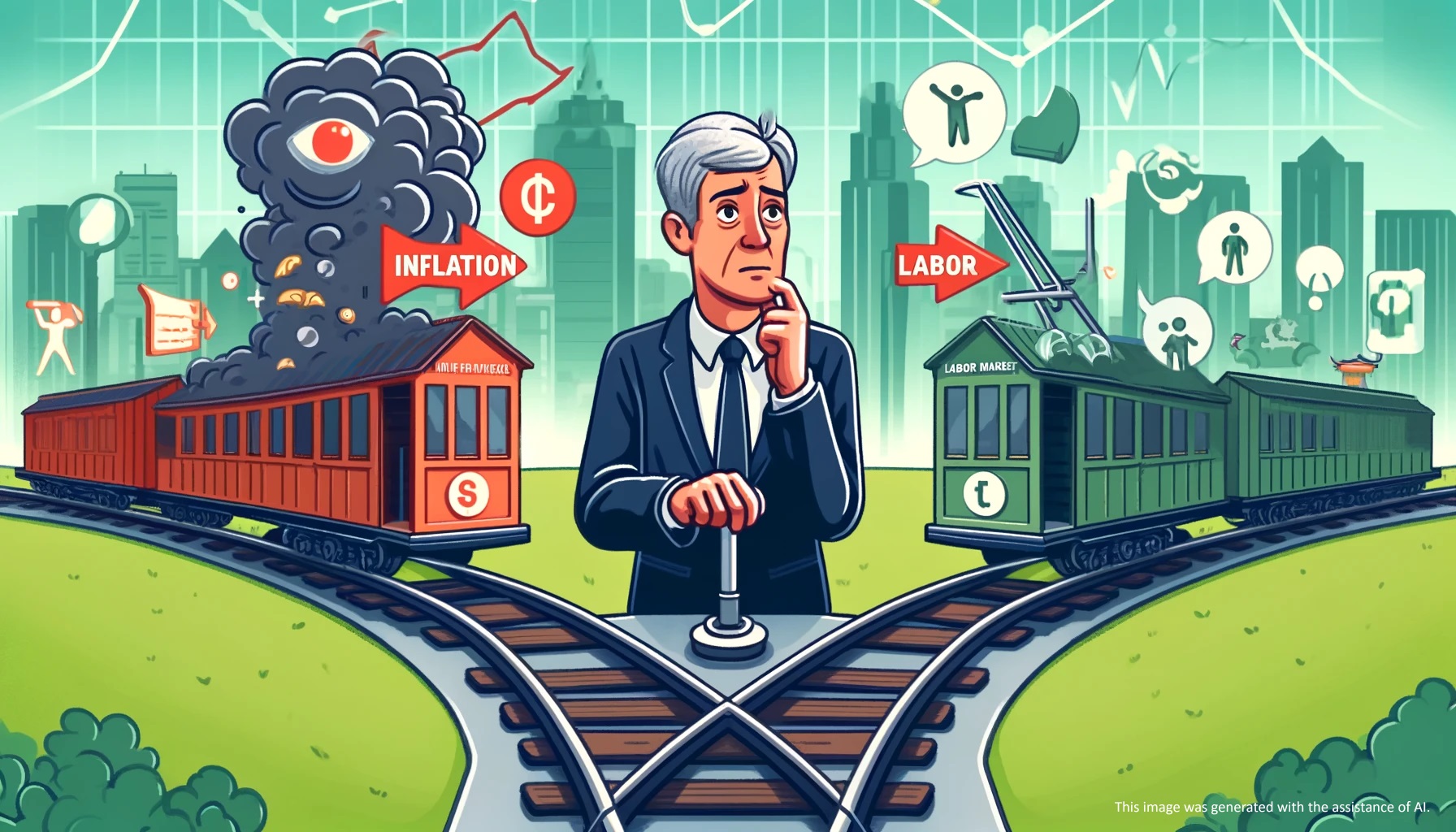Monetary Trolicy
Submitted by Atlas Indicators Investment Advisors on May 31st, 2024
The Federal Reserve (Fed) is currently grappling with a significant dilemma reminiscent of the classic Trolley Problem, where any decision carries considerable consequences. This predicament stems from the Fed's dual mandate: to achieve maximum employment and maintain stable prices, specifically targeting low inflation which they have determined is 2.0 percent on a trending basis. Presently, these objectives are at odds, creating a challenging scenario for policymakers.
Inflation has remained persistently high, which erodes purchasing power and could ultimately threaten economic stability. To combat this, the Fed typically raises interest rates ostensibly to cool down the economy, thereby reducing inflationary pressures. However, this approach risks slowing economic growth and increasing unemployment. Given the cracks beginning to materialize in the labor market, such as slowing job growth and moderately rising layoffs, aggressive rate hikes could exacerbate these issues, potentially leading to a severe downturn in employment.
On the other hand, maintaining lower interest rates to support the labor market risks allowing inflation to remain high or even worsen. High inflation can lead to a cost-of-living crisis, disproportionately affecting lower-income households and potentially leading to broader economic instability. It may also undermine the credibility of the Fed, making future inflation expectations harder to manage and control.
The Fed's dilemma can be likened to the Trolley Problem: pulling the lever (raising interest rates) might reduce inflation but could lead to significant job losses, analogous to diverting the trolley to save more people at the expense of a few. Conversely, doing nothing or keeping rates low to protect jobs might allow inflation to continue unchecked, akin to letting the trolley stay on its course, potentially harming many in the long run.
America’s situation requires a nuanced and carefully balanced approach. The Fed must weigh short-term pain against long-term gain, considering the broader implications of its actions. Ultimately, there is no perfect solution, and each path carries significant trade-offs. The Fed's challenge is to navigate this complex landscape, striving to fulfill its dual mandate in a way that minimizes overall harm and supports sustainable economic health. Adding to its challenge, this is not happening in a vacuum but in an election year instead, a particularly divisive one at that.

